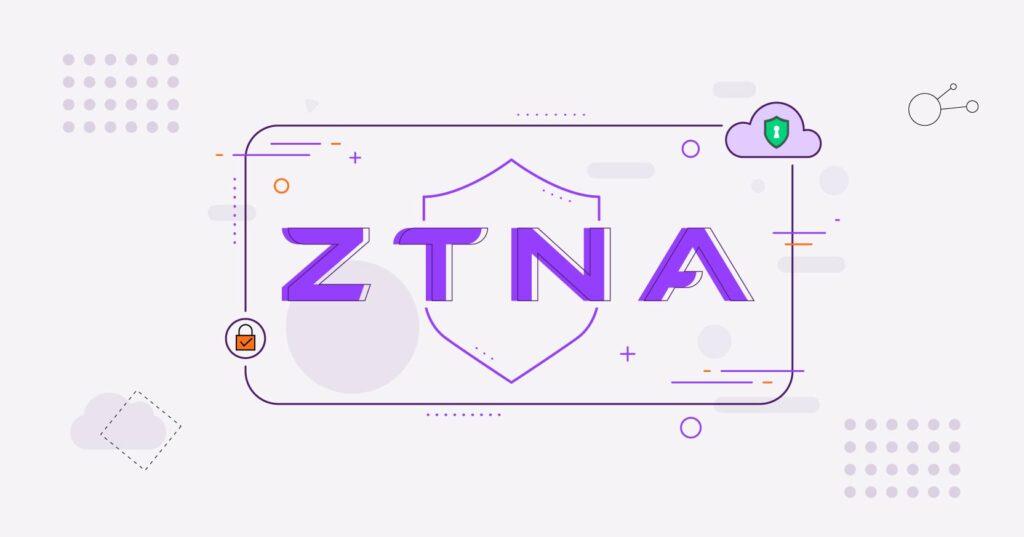
Zero trust access allows only limited, earned trust to be continuously reevaluated and monitored. This helps ensure that compromising one user or device will not enable unauthorized access to the entire infrastructure. A proper ZTNA solution offers scalability and integration capabilities and continuous verification of users to prevent data loss, malware, and compromised credentials.
Micro-segmentation
Micro-segmentation is one of the factors that defines ZTNA. Using micro-segmentation, you can create granular security policies for workloads, reducing the attack surface and preventing lateral movement of threats. It also provides an ideal way to ensure your organization’s data is handled according to compliance standards. In addition, it reduces the risk of compromised accounts by ensuring that an attacker’s access to one segment will not allow them to move across your entire network. Traditional network segmentation uses broad Layer 4 controls such as Virtual Local Area Network (VLAN) technology to divide data center resources, relying on ACLs or IP registers to control VLAN access and limit entry points for cyber attackers. However, these methods are time-consuming and prone to human error. They also cannot provide fine-grained east-west protection within data centers. A software-defined microsegmentation solution enables you to establish a Zero Trust network by creating a separate “perimeter” around each application and environment using granular security policies that only allow the activities your teams explicitly authorize. As a result, the security “walls” surrounding each workload or environment are adaptive and can change in real time to support new applications and business requirements. In addition, a software-defined microsegmentation platform can provide continuous monitoring and alerting of potential threats or policy violations. As a result, it can significantly strengthen your regulatory compliance posture while simplifying the task of performing audits and ensuring that you meet your compliance objectives.
Authentication
Zero trust access solutions authenticate users via an identity provider (IdP) or single sign-on/user portal. These solutions verify identity, link it to role definitions in the organization, and provide access to applications based on those roles. This helps limit access to sensitive data and reduces the damage caused by account breaches by limiting the ability of attackers to move around the system or perform sensitive activities such as privilege escalation. Unlike traditional network security, which assumes a secure network perimeter with trusted entities inside and untrusted entities outside, zero-trust solutions are designed to meet today’s business needs. As a result, they’re often faster to deploy and more flexible than legacy access solutions. They can also reduce the time and complexity of M&A integration while providing immediate value to the business. A ZTNA solution creates a logical access boundary that connects users to applications through end-to-end encrypted tunnels. This allows workloads to communicate securely while keeping the infrastructure invisible. ZTNA also protects from third-party risk by ensuring external users aren’t granted overprivileged access or using unmanaged devices. Many vendors offer ZTNA as a standalone solution or as part of their network and security services suite, such as NGFW, SD-WAN, and WAN optimization. Choosing a vendor that offers a complete suite of security and networking solutions, which can be deployed as a software-defined platform or delivered via a service model, can make it easier to manage, optimize, and scale the solution. It can also help ensure that your organization is protected against the latest threats and meets compliance requirements.
Encryption
Zero trust enables security on the perimeter, reducing the attack surface and protecting applications, devices, and data from breaches and ransomware. To do this, a user’s visibility of resources is restricted through an authentication process to the apps they are permitted to access. This is accomplished by providing a secure, encrypted tunnel for application traffic that shields those applications and their IP addresses from direct public internet exposure and lateral attacks. This approach eliminates the need for traditional remote access appliances, such as VPNs, and provides a seamless connection experience with granular access controls that prevent lateral movement by malicious users. It also eliminates the need to backhaul traffic through the data center and reduces network latency by allowing users to connect directly to the applications they need. A ZTNA solution can be delivered as a service or an on-premises appliance. A cloud-based option offers deployment, management, and capacity flexibility to match business needs. The right choice will depend on whether an organization has a mix of managed and unmanaged devices. An important consideration is the ability to support device and user identity validation through integration with unified endpoint management (UEM) solutions. It should also be able to provide connection and policy enforcement from a distributed cloud location or points of presence worldwide to ensure resiliency.
Monitoring
Unlike legacy network solutions based on VPN that grant access to everything on a given subnet, Zero Trust Network Access only grants access to applications once a user is verified and authenticated. It does so based on various contextual attributes, including device type, user location, and security posture. These attributes are continuously verified and validated during a session so that if something changes, the connection can be terminated to mitigate risks. This is ideal for today’s remote and hybrid workforce, as it removes the need to expose resources on the public internet. It also reduces risk and improves business agility and scalability while supporting the needs of an increasingly distributed workforce across different environments and devices. A ZTNA solution provides secure tunnels between the application and the users to enable this flexibility. This is achieved via end-to-end encrypted TLS micro-tunnels, allowing organizations to avoid opening inbound firewall ports for applications and shielding them from direct exposure on the internet – protecting against distributed denial of service attacks and malware. A ZTNA solution allows the organization to monitor all activity from a single dashboard and enforces granular access policies for each user group or individual. With this visibility, an organization can identify and mitigate threats to its critical assets and protect data by limiting lateral movement in case of a breach.







